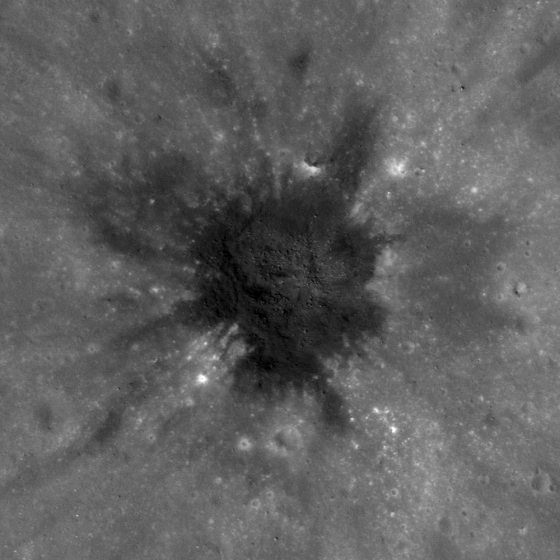The MOON has volcanoes and craters mixing it up. Get along, all ready!
Bad Astronomy:
This odd-looking feature took me a few minutes to figure out, even after reading the description page. What you’re seeing is an impact crater about 170 meters (185 yards) across – the whole image is 450 meters (500 yards) in width. But what’s all that black stuff in the middle?
The picture inset here is an overview of the region (about 200 km across), and you can see the big blanket of darker material on the somewhat lighter lunar surface. The asterisk marks the location of the above picture. The dark stuff is pyroclastic – ash and other material that’s been blown out of volcanic vents in what are called fire fountains. In this inset picture it looks dark, but when it was fresh it was even darker. Over the eons, blasting by subatomic particles in the solar wind – think of it as cosmic erosion – has lightened it. Either that, or nearby impacts blew lighter-colored material over it.
Either way, it’s lightened up. But then something roughly the size of a tennis court, probably an asteroid, slammed into the middle of that region. It churned up pyroclastic material under surface, excavating it. This material still retains its fresh dark look, so the surrounding landscape looks positively gray in comparison.
Mind you, this is only one small part of a much larger image showing this region in high-resolution. I really suggest you take a look at the full image, where you can scan and zoom and really see what’s what. Seriously, it’s an amazing swath of lunar real estate. It’s very flat – as you might expect from an area inundated with volcanic flow – but peppered to near-saturation with small craters. This one crater with the dark material in it really stands out, as much due to its size as to its color and composition. It’s quite lovely.




